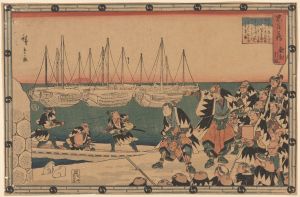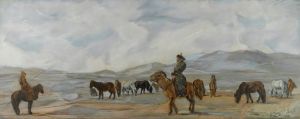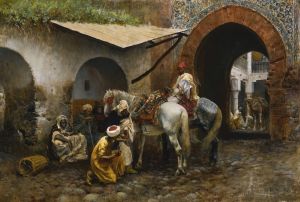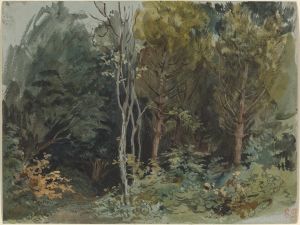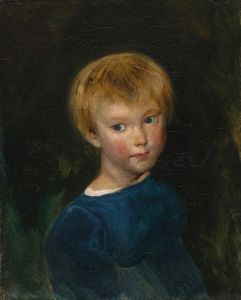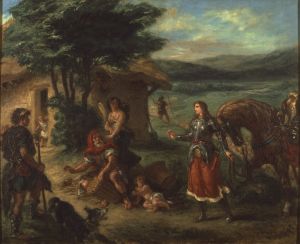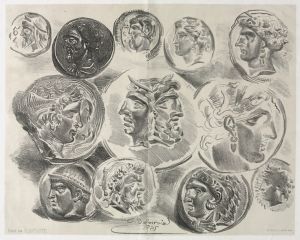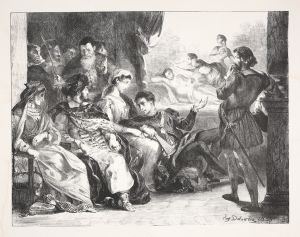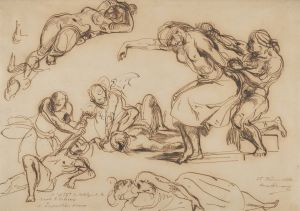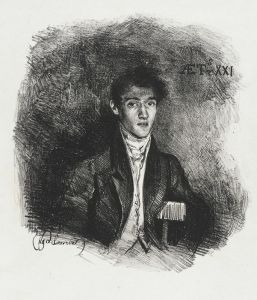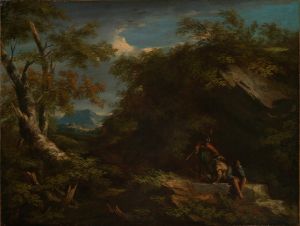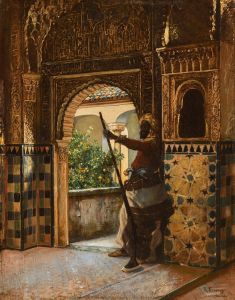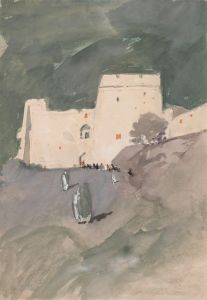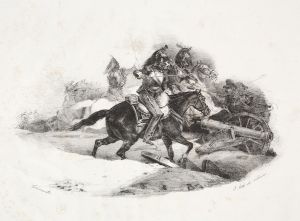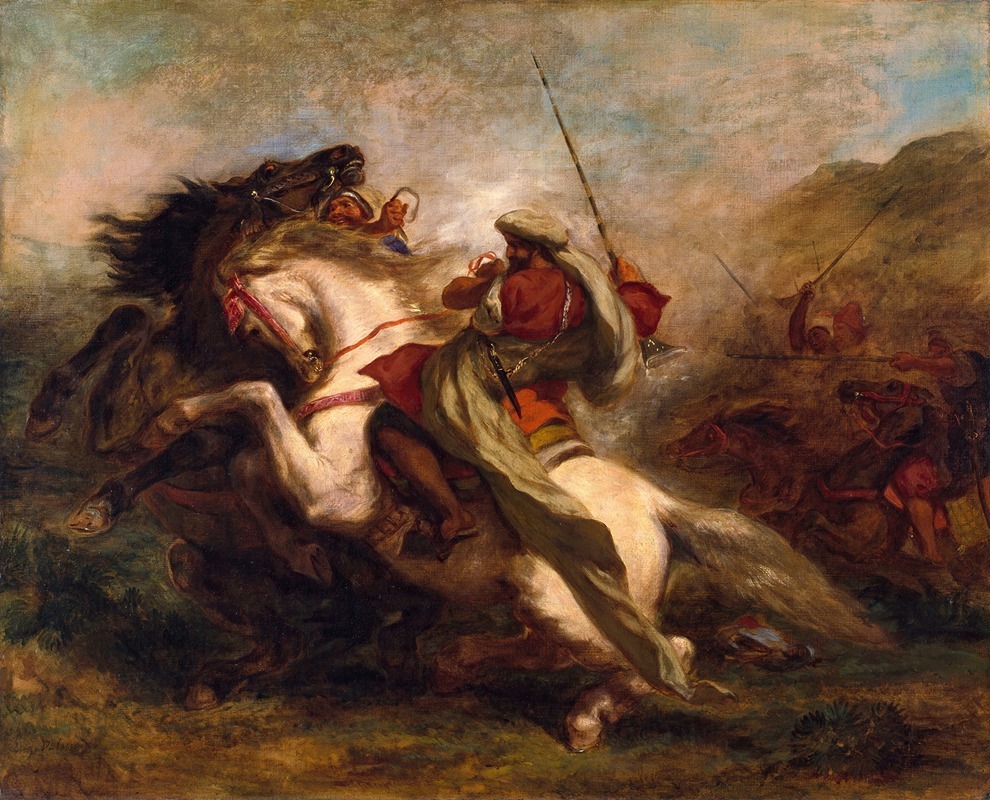
Collision of Moorish Horsemen
A hand-painted replica of Eugène Delacroix’s masterpiece Collision of Moorish Horsemen, meticulously crafted by professional artists to capture the true essence of the original. Each piece is created with museum-quality canvas and rare mineral pigments, carefully painted by experienced artists with delicate brushstrokes and rich, layered colors to perfectly recreate the texture of the original artwork. Unlike machine-printed reproductions, this hand-painted version brings the painting to life, infused with the artist’s emotions and skill in every stroke. Whether for personal collection or home decoration, it instantly elevates the artistic atmosphere of any space.
Eugène Delacroix, a leading figure of the French Romantic movement, is renowned for his vivid and dynamic compositions that often draw inspiration from historical events, literature, and his travels. One of his notable works, "Collision of Moorish Horsemen," exemplifies his fascination with the exotic and his ability to capture movement and emotion on canvas.
"Collision of Moorish Horsemen" was painted in 1843, during a period when Delacroix was deeply influenced by his travels to North Africa. In 1832, Delacroix visited Morocco, Algeria, and Spain, a journey that left a lasting impact on his artistic vision. The vibrant colors, dramatic landscapes, and diverse cultures he encountered during this trip provided a wealth of inspiration for his subsequent works. Delacroix was particularly captivated by the people and customs of North Africa, which he saw as a living embodiment of the classical world, untainted by the industrialization that was sweeping through Europe.
The painting depicts a dramatic scene of Moorish horsemen engaged in a chaotic and energetic clash. Delacroix's mastery of color and movement is evident in the swirling composition, where the figures and horses seem to burst forth from the canvas. The use of bold, contrasting colors and dynamic brushstrokes creates a sense of immediacy and intensity, drawing the viewer into the heart of the action. Delacroix's ability to convey the power and grace of the horses, as well as the tension and excitement of the moment, is a testament to his skill as a painter.
Delacroix's interest in equestrian subjects and Orientalist themes is well-documented, and "Collision of Moorish Horsemen" is a prime example of how he combined these elements to create a compelling narrative. The painting reflects the Romantic fascination with the exotic and the sublime, as well as a desire to explore themes of heroism and conflict. Delacroix's work often blurs the line between reality and imagination, and this painting is no exception, as it captures both the physicality of the horsemen and the emotional intensity of their encounter.
The painting is also notable for its composition, which demonstrates Delacroix's understanding of movement and form. The swirling mass of horses and riders is balanced by the careful arrangement of colors and shapes, creating a harmonious yet dynamic scene. Delacroix's use of light and shadow adds depth and dimension to the painting, enhancing the sense of drama and movement.
"Collision of Moorish Horsemen" is a significant work in Delacroix's oeuvre, showcasing his ability to blend historical and cultural influences with his own artistic vision. It stands as a testament to his fascination with the exotic and his commitment to capturing the essence of his subjects with passion and precision. The painting remains an important example of Romantic art, reflecting the era's interest in emotion, movement, and the exploration of new and diverse themes.





